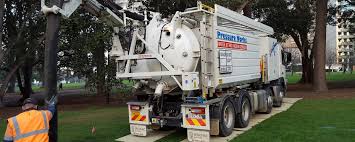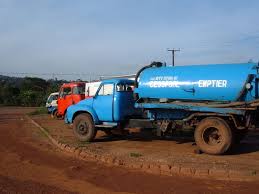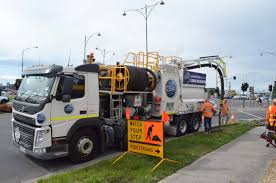What Is Vacuum Loading?
Vacuum loading is a very efficient process that is used extensively in a multitude of industries.Vacuum trucks can perform a clearance task across many different settings and have the appropriate pumps of various capacities mounted on them.These draw up the material that needs to be removed and transfers it to a tank or other receptacle that is mounted on a truck.
Standard vacuum trucks have tanks that can hold over 3,500 litres. However, there are some monster trucks that can have the capacity to remove up to nearly 20,000 litres. Tanks need to be made of materials that can safely carry the required waste without any fear of corrosion.
Most people think of vacuum cleaners when the term “vacuum” is mentioned, but vacuum chambers are present in nearly every industry. A vacuum tank is part of a system that filters air or fluids through suction, outgassing, pumping, or a combination of techniques. Vacuums use pressure to prevent contamination, purify, dehydrate, and even power. Not all vessels are able to withstand the difference in internal and external pressure that results from a vacuum. For this reason, when designing a system that will utilize variations in internal and external pressure, it is critical to consider if a vacuum tank will be necessary to ensure the system’s success as well the safety of the operator.

What is a vacuum truck used for?
Vacuum trucks, also known as vacuum tankers, are often used by cities to handle large-scale liquid and sludge clean up, most commonly in sewer and septic system maintenance. They can also be used in industrial and municipal settings to suction water and debris left from hydro-excavation or drilling jobs. From clearing mud to expose utility lines, to preventing sewer system overloads, vacuum trucks meet the needs of cities and industries requiring environmental clean up, storage tank upkeep, and waste management.
How does a vacuum truck work?
A vacuum truck works similarly to a shop vac. A powerful pump removes air from the holding tank, which creates a vacuum inside. Opening the primary and secondary shutoff valves on suction hoses forces the tank to try to equalize the pressure inside, letting the truck suck up liquids and sludges. Just like a home vacuum, the quality of the equipment and the power of the pump affect suction power and the ability to handle difficult jobs.

Common Uses of Vacuum Trucks
Vacuum trucks intend to meet the various large-scale cleaning needs of cities, municipalities, industries, and other contractors. The traditional uses of vacuum trucks are for emptying septic tanks and cleaning sewer pipes for proper preventive maintenance. Moreover, one of the latest applications of vacuum trucks is hydro excavation. A high-pressure water jetter drills the ground and an industrial vacuum hose pulls the debris into the tanks.
Uncommon Uses of Vacuum Trucks
Aside from keeping streets and operating fields clean, vacuum trucks can perform life-saving and environment-protection functions, too. They can be used for emergencies, especially when dealing with cave-in rescue and recovery missions. Furthermore, during spillage of hazardous materials, vacuum trucks are useful in quickly drawing them out. Some oil and mining firms deal with soil pollution through vacuum trucks as well.

SEPTIC TANK PUMPER OPERATION PROCEDURES
Septic pumping trucks are specialized vehicles which combine a powerful vacuum pump with a holding tank for sewage and wastewater.
The vacuum pump is activated, suction confirmed, the pumper is connected to a 4″ or larger vacuum line, and the operator uses the line to empty the septic tank.
Common septic pumper truck vacuum pump brands include Battioni & Pagani vacuum pumps, Conde vacuum pumps, Hertell vacuum pumps, Masport vacuum pumps, Moro vacuum pumps, NVE (National Vacuum Equipment) pumps, PB vacuum pumps, Juro vacuum pumps.
An example of the type of vacuum pump used on septic tank service vehicles is the Masport HXL400 System – Water cooled 400 CFM unit. Various pump sizes and pumping rates are available, all of them that work on septic pumper trucks will be similar in effect however.
VIP Truck Mounted Combination Wash/Vacuum System 92BBL Specs
The 92BBL Combination vehicle was made from the same steel alloys as the 82BBL model, and at the same thickness. Its tank was divided into two compartments to hold water for cleaning and vacuum debris. The full capacity of the two tanks was 3,864 gallons; with 980 gallons reserved for water and 2,240 gallons for vacuum debris. The combination wash/vacuum vehicle used the same suction and discharge valves as the 82BBL model, and also used a Hibon VTB 820 (1,400 cfm) vacuum pump. The vacuum pump on the combination vehicle had a maximum vacuum of 27 inHg (inches of mercury).